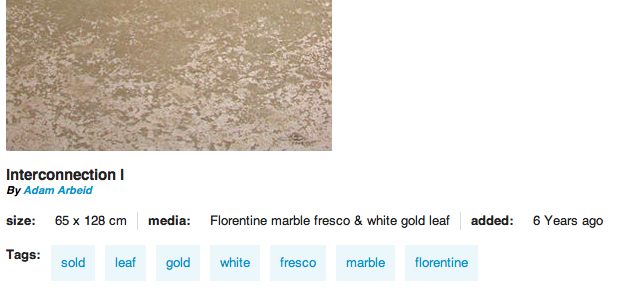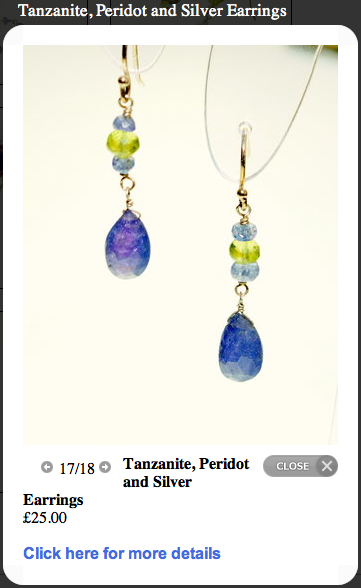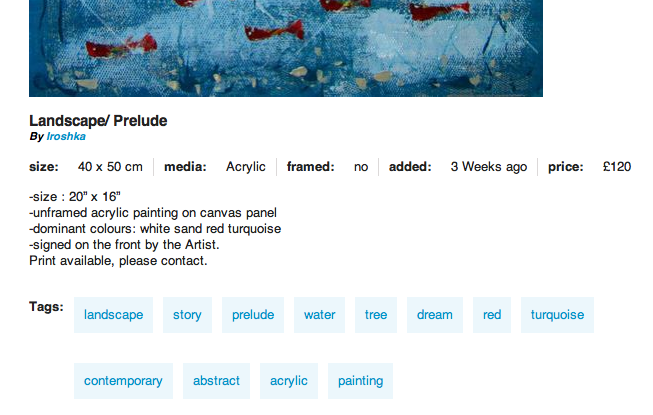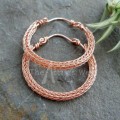With the festive season nearing and potential customers just waiting to discover your art, we thought it might be a good time to go over some of the ways to make the most of your online portfolio or website. In this article we’ll summarise how to increase art sales, by better connection with buyers in adding an artist profile, tagging, pricing, and describing your artwork, and stating your terms and conditions.
Why bother with these improvements?
You want your website to come up high on search engines when people search for you or the type of art you create. Here at ArtWeb, our search algorithm gives preference to users with complete profiles and artwork information. Members with incomplete profiles or listings might not do so well in search results, and have their websites displayed lower on the page. This rule doesn’t just relate solely to ArtWeb – ensuring you have a complete profile will likely improve your listings in search engines, both on your own website and on ArtWeb.com. When people are looking for the art you create, you’ll come up higher than your competition, which means more people will visit your website, and potentially buy your art.
Artist Profile / About Me / Biography
When selling artwork online, it’s really important that you sell your story as an artist. Talk up your relevant achievements, background and aspirations. Members with complete biographies or ‘about me’ sections will inevitably go on to be more successful, as they allow their potential buyers to connect with their artistic background. Your profile doesn’t even need to be very long, a couple of well-written sentences is a great start.
Here are a couple of great profile examples from ArtWeb artists: Leyla Murr, Kim Waiyaki
Describing your artwork
It can be hard writing about your artwork, but it really helps potential buyers connect with your work. People are more likely to buy your artwork if they feel they have a personal connection with you as an artist. Make sure all your images have some sort of notes or descriptions, ideally at least a sentence or two about the work. Try to include information about the materials used, the process behind it, and perhaps even a story of how you came to create it!
For more advice, read our blog post, ‘Making it Clear’: //blog.artweb.com/art-web/getting-the-most-out-of-your-website-part-2-making-it-clear/
Pricing your artwork
It may seem an obvious point to make, but pricing your work is going to dramtically improve the chance of making sales! People who browse websites will be more persuaded to consider buying an artwork if the price is easily visible. The process of emailing to get a quote for a specific piece of art might well put people off.
Not only that, but if you’re an ArtWeb member, artwork that isn’t priced is far less likely to get attention on ArtWeb.com. Many people search using the ‘price range’ filter, so artwork with no price will not appear in these searches at all. If you don’t feel ready to sell, perhaps you could just price it very high until you’ve had a chance to think about things!
Here’s some further advice on pricing your artwork: //blog.artweb.com/art-web/art-and-money-1-pricing-what-is-your-artwork-worth
And here are some examples of members with great image descriptions and well though-out pricing: Susan Miller, Jubilicious (see image below)
Image Tags
To make sure your artwork gets the exposure it deserves, you need to make sure all your images are tagged appropriately. Not tagging your images will mean you are missing out on search traffic. Be sure to use tags that accurately reflect your images. Don’t use unrelated or irrelevant tags, as it can reduce the popularity of your images in search results. Words like ‘and’ or ‘if’ should never be included as tags, instead think about the colours, mood, and subject of your work, and try and imagine what terms you would search for if you were looking for your work.
If you’re on ArtWeb, here’s how to update the tags on your images
Here are some examples of artists using effective image tags: Iroshka, Rack Howkins
Artwork Media
This is a really important part of listing your work. It may seem clear to you what materials were used in the making of your art, but on screen it can be really hard for a buyer to know whether something is a screen-print, or a painting, or a photograph etc. When selling online, it’s essential to make things as clear as possible, and to help the potential customer really understand the process behind the work. For example, a photo-realist painting may appear on screen to be simply a photograph. However, if this is clearly stated as a painting, it may just make someone take a second look at your work, and give them a totally new perspective. Try and look at your work with a new pair of eyes, think about what questions you might ask about the piece, and then ensure you answer them in every listing!
Here are some examples: Adam Arbeid, Hazel Pickering, Jenny Llewellyn
Adding Terms and Conditions
People are understandably wary of scams on the web. Therefore, everyone who considers purchasing something they like online is looking for signs that the vendor as well as the platform used is trustworthy. That’s why it’s really important for both buyer’s confidence and legal reasons that you have info for buyers (terms of sale) listed somewhere on your site. It will give buyers confidence in you and your work, and also makes it clear how to pay.
If you’ve got a website with ArtWeb, we’ve prepared most the work for you already! You just need to check the boxes that apply to you. It’s simple and will only take a few minutes. Go here to update your information for buyers.
Have a look at these examples of artists with full terms and conditions included on their websites, so you can get a feel for how it might look: Delia Wiggins, Isle Bernthal, Tracey Unwin.











